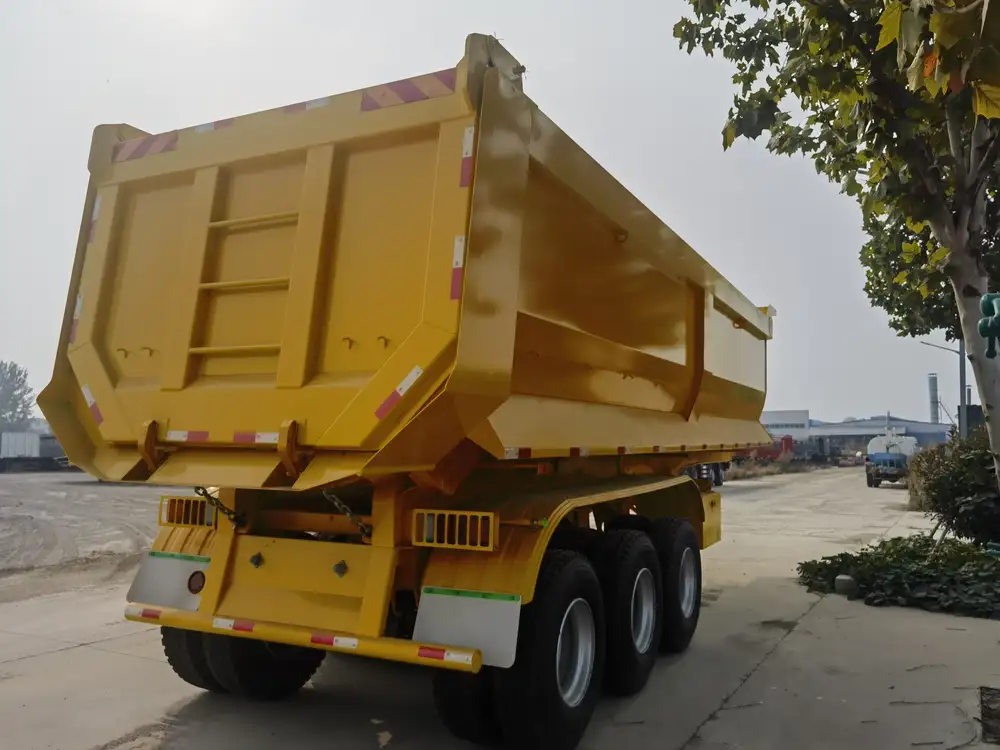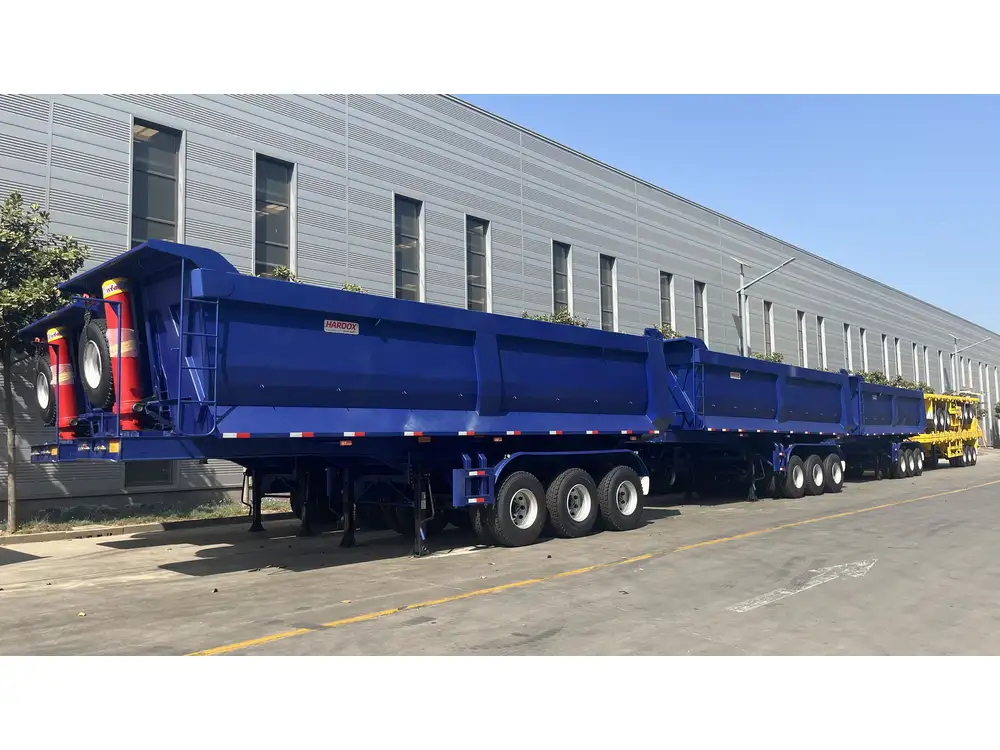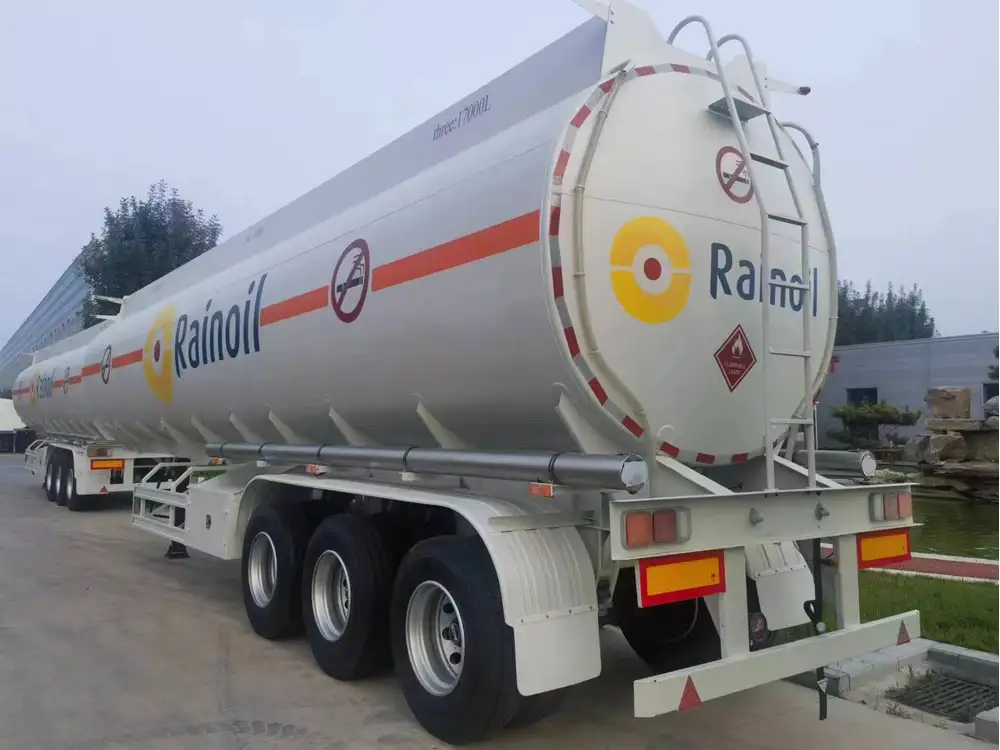Dumping loads from an end dump trailer requires a combination of technical skill, safety awareness, and understanding of the equipment’s mechanics. As a leading manufacturer of semi-trailers, we aim to provide you with an in-depth analysis of the dumping process, enhancing your operational efficiency while ensuring safety and compliance. This article will cover everything from the setup to the actual dumping process, tips for maintaining an end dump trailer, and common challenges you may face.
Understanding End Dump Trailers
What is an End Dump Trailer?
An end dump trailer is a specialized semi-trailer designed for hauling haulable materials, often used in construction and landscaping. Its primary feature is a hydraulic system that tilts the trailer bed to unload contents from the back. This design allows for quick unloading in a variety of settings, making it a preferred choice for many transport operations.

Components of an End Dump Trailer
Before mastering the dumping process, familiarize yourself with the essential components of an end dump trailer:
| Component | Description |
|---|---|
| Trailer Frame | The main structure that supports all components. |
| Tipping Mechanism | Hydraulic system responsible for tilting the trailer. |
| Dump Bed | The container where materials are loaded. |
| Safety Props | Stability devices used during maintenance. |
| Axles and Tires | Essential for mobility and load-bearing capacity. |
Importance of Proper Maintenance
Routine maintenance can prolong the life of your trailer and prevent accidents. Regularly check hydraulic fluids, brake systems, tire pressures, and trailer structure. Adhering to a maintenance schedule minimizes breakdown risks and enhances safety.
Step-by-Step Process: How to Dump an End Dump Trailer
Dumping an end dump trailer is straightforward, but each step must be approached with caution. Below is a detailed outline of the dumping procedure:

Step 1: Preparing the Site for Dumping
Choose a Proper Location: Ensure the selected site is level and stable. Avoid soft or uneven ground to prevent tipping during the unloading process.
Check for Obstructions: Look for overhead and ground-level obstructions. Trees, power lines, and uneven surfaces can impede the dumping process and pose safety hazards.
Notify Personnel: Inform nearby workers of the dumping operation to ensure their safety during the unloading process.
Step 2: Positioning the Vehicle
Align the Trailer: Back up the end dump trailer so that the unloading area is directly behind it.
Engage the Brakes: Ensure that the trailer is adequately secured by engaging the parking brakes.
Set the Landing Gear: Lower the landing gear to stabilize the trailer.
Step 3: The Dumping Procedure
Raise the Dump Bed: Switch on the hydraulic system using the control lever. Raise the dump bed slowly until it reaches the desired angle.
Monitor Dumping Materials: Keep a close eye on the materials as they begin to unload. Adjust the hydraulic system as needed to control the speed of the dump.
Complete the Dump: Once the load is clear, lower the dump bed back to its original position. Always ensure all materials are unloaded before moving forward.

Step 4: Post-Dumping Procedures
Inspect the Area: After dumping, check the site for leftover materials or hazards, ensuring a clean unloading area.
Secure the Trailer: Once unloading is complete, disengage the hydraulics and secure the dump bed. Ensure all safety props are locked.
Conduct a Thorough Inspection: After each dumping operation, inspect the trailer for any damage or necessary maintenance tasks. Identifying issues early can prevent complications later on.
Safety Considerations
Personal Protective Equipment (PPE)
Ensure that all operators and involved personnel wear appropriate PPE such as hard hats, steel-toed boots, gloves, and high-visibility vests. Proper gear is crucial for preventing workplace injuries.

Training and Certification
All operators should undergo training and obtain certification before handling an end dump trailer. Courses should cover operational procedures, safety regulations, and maintenance best practices.
Common Safety Hazards
- Tipping: Always secure the trailer on flat ground to avoid tipping during the dumping process.
- Material Movement: Loose materials can shift unexpectedly. Be cautious of where you position yourself during the unloading.
- Hydraulic Failures: Regularly inspect hydraulic components to prevent accidents associated with sudden failures.
Troubleshooting Common Issues

Hydraulic System Malfunctions
Signs of Trouble
- Slow or unresponsive hydraulic system
- Unusual noises during operation
- Fluid leaks around hydraulic components
Solutions
- Inspect hydraulic fluid levels and top up if necessary.
- Check for kinks or leaks in hydraulic hoses.
- Consult a technician for valve and pump issues.

Uneven Dumping
Causes
- Unlevel ground can cause the trailer to dump unevenly.
Solutions
- Always check the ground conditions before dumping.
- If necessary, reposition the trailer to a more suitable surface.

Tips for Optimal Performance
Regular Training: Provide ongoing training for operators to stay updated on best practices and safety protocols.
Hydraulic Maintenance: Schedule regular hydraulic system inspections to maintain efficiency.
Load Management: Keep loads well-distributed and within the trailer’s weight limits to prevent structural damage.
Conclusion
Mastering the skill of dumping an end dump trailer involves a multifaceted understanding of both equipment and safety measures. By following the comprehensive guide outlined above, you can ensure efficient operations, minimize safety risks, and extend the longevity of your trailer. Remember that preparation, attention to detail, and safety consciousness are your greatest allies when handling an end dump trailer.
By investing in training and maintenance, you’ll not only streamline your operations but also boost the productivity and safety of your workforce. For further assistance or inquiries regarding end dump trailers or other semi-trailer needs, please reach out to our experienced team. Let’s enhance your transportation efficiency together!



